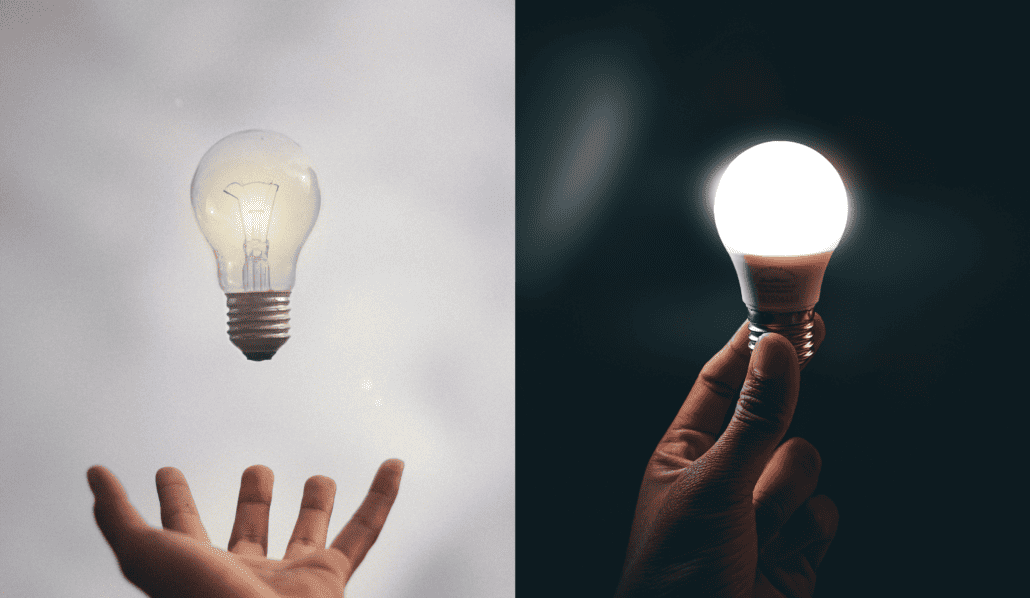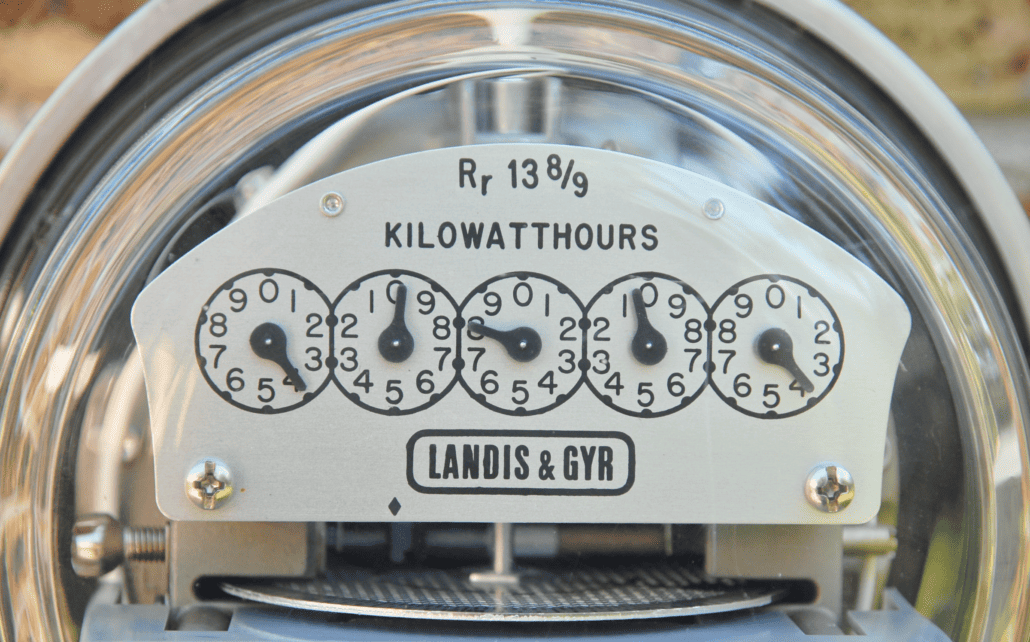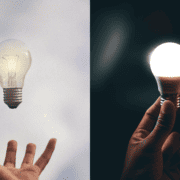Out With the Old, In With the LEDs: The End of Incandescent Bulbs

The familiar glow of incandescent light bulbs brings a sense of comfort and nostalgia to many. But as of August 1, 2023, the United States has effectively banned the sale and manufacture of incandescent light bulbs.
This ban brings an end to decades of light evolution in an attempt to drive innovation and reduce energy consumption. For the majority of American households, the ban on incandescent bulbs signals a new chapter for lighting homes with the more sustainable and cost-effective technology of LEDs. Here is what you need to know about the ban.
The Origins of the Ban
The U.S. ban on incandescent bulbs has been brewing for nearly two decades. In 2007, President George W. Bush signed the Energy Independence and Security Act into law. This act aimed to achieve many things, including new performance standards for light bulbs.
The Energy Independence and Security Act did not ban incandescent bulbs, but it did necessitate that they become more energy efficient.
Unfortunately, traditional incandescent bulb technology wasn’t able to meet the new standards. Only about 10% of the total energy used by an incandescent bulb is necessary to produce light. The remaining 90% is wasted as heat.
On the other hand, LED bulbs are 90% efficient, which means they clearly meet the new efficiency requirements.
Frequently Asked Questions About the Ban
Here are some of the frequently asked questions about the ban, including what lighting options you’ll have and what to do with any outdated bulbs you may have on hand.
What Lighting Options Are There After the Ban?
With incandescent bulbs being phased out, here are some of the lighting options that will still be available and legal to purchase:
- LED Bulbs: LED bulbs that meet the efficiency standards dictated by the ban will be widely available, including LEDs that look like traditional light bulbs.
- CFL Bulbs: Compact fluorescent bulbs that meet the minimum lumens per watt standards — 45 lumens per watt — may still be sold, though these are declining in demand with the increased production of LEDs
- Fluorescent Tubes: Linear fluorescent tubes won’t be affected by the ban, though LED tube lights are taking over the market.
In addition, there are some special-use incandescent bulbs that will remain on the market for now, such as appliance or colored bulbs, but these represent a minimal fraction of the bulb market.
Do You Need to Throw Away Old Incandescent Bulbs?
No, if you already have incandescent bulbs in use at home, you don’t need to discard them unless you want to in favor of more efficient lighting. The ban only affects manufacturing and sales.
Are Fluorescent Bulbs Banned or Phased Out?
As of summer 2023, the ban only applies to certain incandescent bulbs. While fluorescent tubes and CFLs are not being directly affected, the new efficiency standards going forward may impact these technologies.
The Benefits of LED Lighting

If you need more convincing in favor of abandoning incandescent for LEDs, here’s a list of some of the benefits of LED lighting.
Lifespan Length
LED bulbs come with a longer lifespan compared to incandescent bulbs, with some lasting up to 50,000 hours or even longer! The extended lifespan of LEDs makes it easier to maintain lighting in your home and minimizes waste and expenses from frequent bulb burnouts.
Considering most LEDs last over 6 years with normal use, you’ll definitely see improvements in costs.
Energy Efficiency
LEDs use considerably less energy compared to incandescent bulbs. LEDs convert most of their energy into light instead of wasted heat and are able to provide the same level of brightness for a fraction of the power.
This energy efficiency can further save your household money on electricity bills while also reducing the environmental impacts of energy generation.
Versatility
LEDs come in a wide array of shapes, sizes, and colors. From regular bulbs to light strips to Christmas lights, there are LED options for virtually any lighting application. LEDs also have different color temperatures to suit various preferences, from warm white to bright colors.
Safety
Since LEDs emit very little heat, they do not pose a burn risk the way incandescent bulbs do. This is especially beneficial if you have children or pets in your home.
The glass of incandescent bulbs can reach scorching temperatures when used, while LED surfaces stay cool to the touch. Safety-wise, LEDs are the best lighting choice for illuminating high-traffic zones, including play areas and the kids’ rooms.
Light Quality and Flexibility
LEDs provide higher-quality light compared to the yellow hue of incandescent bulbs. If you’re a fan of warm lighting, you can still select your ideal color temperature, but with the added benefit of being able to adjust the color and intensity as needed.
Customizable illumination means you have higher quality light in your home and the flexibility to craft the right ambiance depending on your mood.
Durability
LEDs are more resistant to vibrations and external damage, which means you don’t have to live with the buzzing of loose filaments from incandescent lights. LEDs also stand up against drops, general wear and tear, and jostling — especially compared to other lighting options.
Their tough build makes them ideal not only for installation in your home but also in areas subject to movement, like campers and workspaces.
Smart Capabilities
Perhaps one of the most impressive benefits of LED lighting is the ability to integrate LEDs into smart home systems for features like:
- Automated scheduling
- Color changing
- Voice activation
- Other integrations
If you love tech and want to be able to turn the lights on in your home from the touch of a button on your phone, you’ll want LED lighting.
The Incandescent Ban Controversy
Although LEDs have numerous benefits, there has been some controversy and pushback. Common concerns include:
Higher Upfront Costs
Even though LEDs last years longer than incandescent bulbs — resulting in long-term savings — the higher upfront cost of LED bulbs can feel like a barrier for many.
Luckily, the prices have dropped dramatically as LEDs have become more popular and in demand. Additionally, some utility companies offer rebates to help ease the transition for homeowners.
Light Quality
Those used to the soft glow of incandescents may feel that LED light is too cool and clinical. LEDs have this reputation because early models did cast a harsh, pale light.
Now, however, warm color temperature LEDs can mimic the soft glow of incandescents with the added benefit of better light quality.
Mercury Content
One type of long-life bulb, CFLs, has been known to contain a small amount of mercury. Although the amount is minimal, many are concerned about having CFLs in their homes because of the risk of breakage and disposal.
LEDs, however, are completely mercury-free, so you don’t have to worry about this issue.
Government Overreach
Many feel concerned that the ban on incandescent bulbs is an example of government overreach, affecting the free market. But history shows that implementing standards like energy efficiency can successfully spur innovation in a way that improves society and humankind overall.
A Global Leap Toward Sustainability

The U.S. is not alone in transitioning away from incandescent bulbs. Countries around the world have been phasing out these energy-inefficient bulbs via various standards and regulations.
For example, in January 2023, the U.K. proposed increasing minimum energy performance. And the East African Community began phasing out conventional and fluorescent lamps in favor of LEDs in July 2022.
The global transition to LEDs and other highly efficient lighting options is a key strategy for reducing energy consumption and carbon footprints to become more environmentally sustainable.
So while incandescent bulbs may be difficult for some to give up, the fact of the matter is that LED technology represents the innovative promise of a more sustainable future.
Embracing Sustainable Lighting With LEDs
The U.S. ban on incandescent bulbs closes an important chapter of innovative lighting history. However, with the ban comes a new era of enhanced efficiency. For American households, this transition will support energy conservation, cost savings, and reduced environmental impact.
On a broader, global level, the ban signifies human society’s ongoing commitment to developing technologies that benefit not only humankind but the planet as well. Of course, as with any major transition, there needs to be effective education to ease the shift to new lighting norms.
Consumers need to know how to identify LED bulbs based on their needs and preferences. Retailers should make a concerted effort to address common myths and misconceptions around LEDs while communicating their benefits compared to traditional bulbs.
Make the Transition to LEDs Today
If you’re ready to make the transition to LEDs and a more energy-efficient home, turn to the skilled team at CJM Lighting & Electrical. With over 20 years of experience at our disposal, we can perform a free energy assessment to help you identify areas where you can make your home in Wisconsin more efficient.
We can also help you install LED lighting both indoors and outdoors, so you can enjoy your space in a way that’s good for your wallet and better for our planet. Contact us today to learn more about our services.












Leave a Reply
Want to join the discussion?Feel free to contribute!